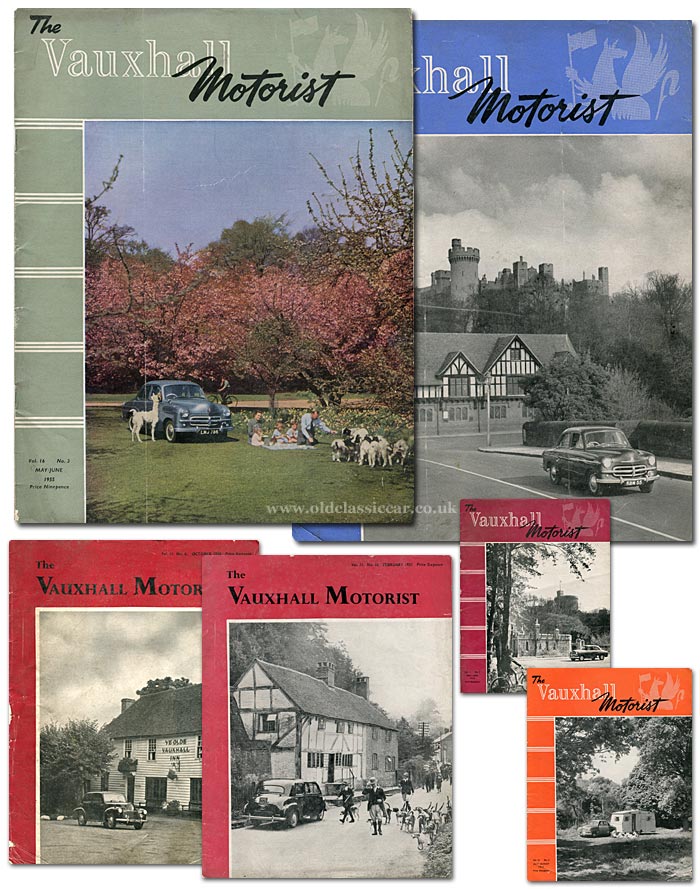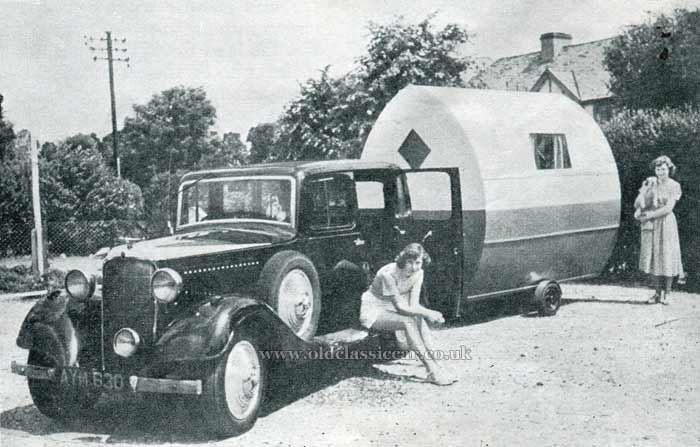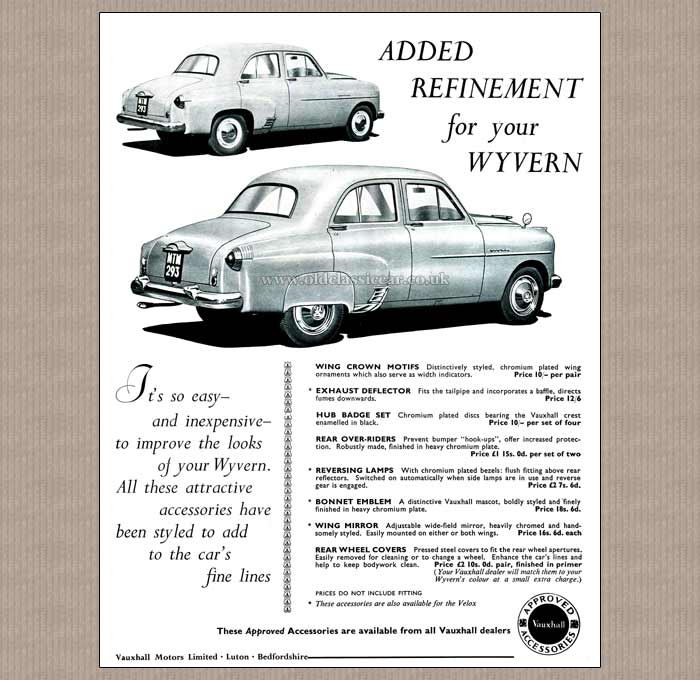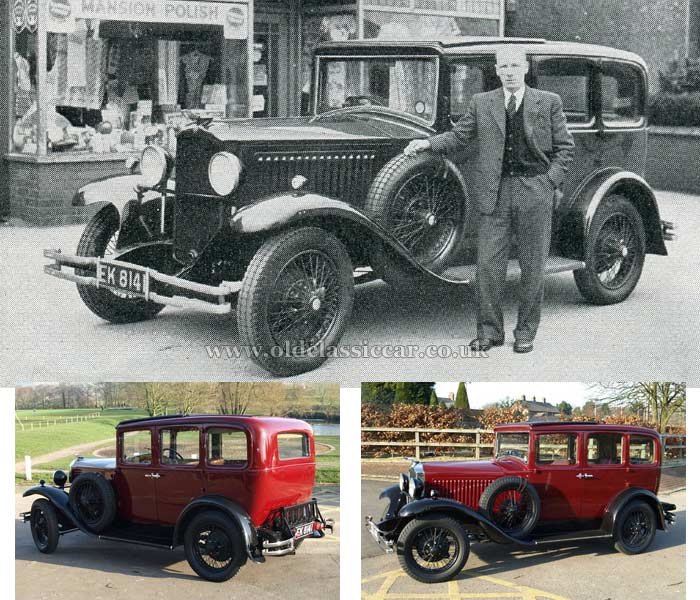The Vauxhall Motorist (1950-1955).
Copies of The Vauxhall Motorist dating to the early 1960s, were added to this section some years ago (link). Here though, copies from the early years of the 1950s are looked at. I bought a small pile of these magazines, at an autojumble two or three years ago. As they don't turn up all that often, they were snapped up on sight, just a few moments before the heavens opened. In all, there are eleven issues, of which six are featured. The earliest is from 1950, the latest 1955.
|

|
October 1950 issue.
At the time, things weren't all that cheerful on British roads. New cars were limited in their availability, so despite manufacturers bringing out new designs - often to replace pre-war models that were pressed back into production once the war had ended - most tended to go for export. Therefore, reading about Vauxhall's exciting new cars in October 1950 was all that most could hope for. A monthly magazine, the price was 6d. It could be bought via annual subscription, or else picked up each month at one's local Vauxhall garage.
|
|
Perhaps because of their cars' limited availability on the home market, the cover illustrations on the early-50s copies tends to be quite reserved, almost dull in fact. By comparison, mainstream motoring titles such as The Motor, and The Autocar, often bore exciting, eye-catching illustrations on their covers. Practical Motorist too used stunning full-colour illustrations to attract their readers.
|
|
October's cover features an L-Type Vauxhall Velox, registration KKT 995, parked outside Ye Olde Vauxhall Inn. Clearly its owner was a cautious type, as his/her car is fitted with both AA and RAC members' badges. A quick check of the KT registrations page, confirm that this Kent series was first used in July 1948. The Inn, address 1 Vauxhall Gardens, Tonbridge, in Kent, was Grade II listed in 1950. It survives, although now goes under the simplified name of "Vauxhall Inn", the "Ye Olde" having been dropped.
|
|
Advertisements, for the likes of Lockheed, Dunlop, Lucas and Firestone, occupy the first few pages, followed by the editorial. Taking pole position in the subjects discussed is a suggestion that Vauxhall car owners might like to "... very easily help [television] viewers by voluntarily fitting suppressors to their own cars ... it must be admitted that passing cars can upset television reception very considerably". This, despite the Postmaster General having no plans at the time to make the fitment of ignition suppressors compulsory.
|
The Dove-Cot folding/collapsible caravan.
Pleasure travel by motor-car is a recurring theme through many magazines of the era, and The Vauxhall Motorist has its fair share of holidaying-related content. Take for example the following gem, the Dove-Cot collapsible caravan. A "brand new conception in caravans", the Dove-Cot was a product of 20th Century Novelties Limited, of Thames Ditton, Surrey.
|

|
|
"Designed to save winter storage costs, the caravan folds up neatly onto its floor base when not in use. Built of 17 easily-dismantled sections of double-skin hardboard on a timber frame, it costs, complete with two bunks, cupboard, and chromium fittings, only 110 GBP. The veteran Vauxhall, which spent only seven days off the road during some unusually hectic war service with the Fairey Aviation Company, serves nowadays as motive unit for the new caravan's test trips."
|
|
The Vauxhall is a 1934 12hp or 14hp six-cylinder machine (model ASY or ASX), registration AYM 630. Coincidentally I once owned just such a car, a 12hp ASY, in 1992. Mine wasn't in such fine condition though (where are you now AND 300?), and didn't sport the ACE wheel discs that have been retro-fitted to this example. Very smart. The caravan's a little belter too. Were many made? A quick look online doesn't bring up any details of survivors. A 1951 copy of the BARC Gazette, which also features in the magazines section of Old Classic Car, does refer to the Dove-Cot collapsible caravan though, in the news section. No record of this particular Vauxhall can be found either, so presumably it went the way of the melting pot, a long time ago. Unless you know different?
|
South African road trip.
On the facing page begins a travel article utilising the services of a much younger, L-Type, Vauxhall Wyvern, of 1949 vintage. The dependable four-cylinder Vauxhall was pressed into service during a road trip across South Africa, where all manner of animals were encountered, routes navigated, and conditions dealt with, the plucky Brit taking them all in its stride. The car was sold on at the end of the journey, I wonder if its new owner was aware of the strenous use it had been put to already, in its first months of life?
|
|
The magazine offers general-interest articles, in addition to those of a motoring flavour. Readers in October 1950 would learn of the many different shapes of church spire that could be found across our fine and pleasant country, and refresh their knowledge of the Roman highways that cross our soil. Worthy reading matter, if not perhaps all that captivating to the keen motorist.
|
Forecourt experiences.
The joys, or otherwise, of using roadside filling-stations are the focus of Mr Dennis May's article this month, inspired by the less-than-glowing comments that were made by a gentleman from Nebraska, during a trip to our shores. Using this gent's experiences, Mr May goes on to describe the many things that get him hot under the collar, with regard to roadside garages in particular. These include an over-familiar forecourt attendant, who insists on addressing him as "mate", and others that look at him agog, when asked to wipe up any fuel spillage that may have occurred while being served. Those attendants that "accidentally" dispense say five, instead of the asked-for four gallons of motor spirit, also meet - correctly - with his disapproval. At the end of the day, all he sought was a spot of common courtesy coupled with a smattering of good manners, and who could argue with that? As with several articles in the magazine, cartoons by Russell Brockbank accompany this piece.
|
|
"An enquiring 'Yessir?' and a touch of the cap, by way of preliminary to the sale of a tankful, goes a long way with most motorists; instead of which one is just as likely to be met with a wooden stare, and sent on one's way either without a thank-you at all or with an unintelligible mutter."
|
|
"The owner of a brand new model, or perhaps an old one with some unusual accessory (of which he is doubtless rather proud) warms to the garage man who notices and comments, 'Smart job, this new model. How d'you find her sir?' or 'That's a neat filler lock you've got there, sir. Haven't seen one of those before.' It's pleasant, that sort of thing, but I know plenty of petrol salesmen who wouldn't be bothered to register anything beyond their habitual far-away look if you brought in a rear-engined amphibian with Icelandic licence plates."
|
Vauxhall rear suspension matters.
For a factory-produced magazine, there aren't all that many references to their latest designs and developments. Part three in a series of articles that discuss the design and maintenance of the Vauxhall Wyvern's rear suspension can be found. This reflects the fact that car owners were expected to be a lot more au-fait with the intricacies of their car's design, than is the case today, when many motorists have little idea of - or interest in - what goes on beneath their backsides, as they aim their cars down the road. Not for them, Saturday's spent adjusting a carburettor, tweaking a car's brakes, or giving the engine a quick de-coke.
|
Older models.
Vauxhall were happy to include material about models that had long-since disappeared from their new-car showrooms, after all it helped fill the pages, and reflected the fact that many cars of advancing years were still giving good service. A letter from a Mr P.G. Platt, of Dereham, is just such an example. It also highlights just how patient new-car buyers had to be.
|
|
"Dear Sir, In praise of good workmanship and the reliability of Vauxhalls, I would like to bring to your notice the 1937 Vauxhall 14/6 which I am running and which has covered to date approximately 75,000 miles. Over the past 13 years this car has given first-class performance and never once let me down. The only replacements have been the tyres, plugs, battery and front shock absorbers. No major parts of any description have had to be replaced."
|
|
"The engine has never been rebored or decarbonised; nor have the tappets ever been adjusted. Mileage to the gallon is still approximately 25, and the oil used is practically nil. This is surely proof of a really first-class job, and a car to be proud of."
|
|
"I have had a Velox on order for three years now; when it does come along the present car will definitely not be disposed of."
|
|
Clearly Mr Platt was a happy customer. I wonder what he made of his new Velox, when it eventually arrived, and what became of his trustworthy pre-war 14/6?
|
Moving on in time, to 1955.
Over the years, the design of the magazine's cover gradually cheered-up. By 1953 the typefaces were becoming more imaginative, and as the May/June 1955 issue demonstrates, cover images were now in full colour. The change to the magazine being published every other month, rather than monthly, appears to have taken place at some point in 1951 or 1952. My 1955 issue has a staged photograph of a family enjoying a picnic on its cover, surrounded by a variety of four-legged friends. Bagot goats are tempted by a piece of bread, while an inquisitive llama admires the smart E-Series Vauxhall at close quarters.
|
|
A couple of pages in, a full-page advertisement may be found, describing the optional extras that the buyer of a new Wyvern (and Velox) could choose from, in the summer of '55. These were as follows: i) Wing crown motifs ii) Exhaust deflector iii) Hub badge set iv) Rear bumper over-riders v) Reversing lamps vi) Bonnet emblem vii) Wing mirror vii) Pressed rear wheel covers.
|

|
1931 Vauxhall Cadet, EK 8141.
As in the earlier edition, the 1955 reader of The Vauxhall Motorist was presented with a range of articles and news items, some relating to modern-day motoring matters, other to matters historical. In the latter category is a photo of an immaculate 1931 Vauxhall Cadet. Bought with just 10,000 miles on the clock, and described as being in "as new" condition, its lucky buyer was a one-time footballer, Mr Bobbie Crawford. Evidence of the war years can be found, thanks to the chrome radiator surround which has been painted over. The bumpers appear to have been painted over in a light-ish hue, again a black-out requirement.
|
|
I was fully expecting there to be no sign of this car's registration, lodged with DVLA. To my astonishment, not only does the Vauxhall still show as being registered, it's taxed until the end of the year. DVLA also confirms its colour - maroon. Here it is in 1955, and how it now looks today, restored, following a recent online sale. It also features in a book entitled "Vauxhall - A Century in Motion". A rare survivor.
|

|
Choosing a domestic car garage.
While car technology had come on leaps and bounds since the war years, Mr Car Owner of 1955 could still often be found under the bonnet of the family car, attending to its regular needs. Probably one of the best ways of preserving a car, any car, is to keep it in a dry well-ventilated garage. Like an article more usually found within the pages of Hobbies Weekly, four pages are given over to the choice and build of a modern car garage. Advice on garage dimensions is given, including useful information regarding the dimensions of the popular Vauxhall models, both pre- and post-war. There then follows an array of buildings, to suit all pockets and tastes. These centre around the popular pre-fabricated types, often clad with either tin or asbestos sheet. Such was the prevalence of asbestos in the build of new garages throughout the 1950s, care needs to be taken with their disposal today.
|

|
|
All these magazines provide a great insight into the world in which cars of the 1950s were launched. Heaters were not yet standard fitment in so many cars, and use of a starting handle was not uncommon. Maintenance was required on a much more regular basis than is the case today, and cars of non-British manufacture were far from numerous across most of the country. Reading magazines and books, contemporary to the vehicle(s) that are driven around as "classics" today, can be an excellent use of a winter's evening.
|
Further reading, here on OCC.
|









